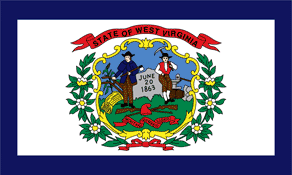West Virginia State Standards for Mathematics: Grade 6

Currently Perma-Bound only has suggested titles for grades K-8 in the Science and Social Studies areas. We are working on expanding this.
WV.MA.S.6.1. Number and Operations: Through communication, representation, reasoning and proof, problem solving, and making connections within and beyond the field of mathematics, students will demonstrate understanding of numbers, ways of representing numbers, and relationships among numbers and number systems, demonstrate meanings of operations and how they relate to one another, and compute fluently and make reasonable estimates.
MA.O.6.1.1. Demonstrate an understanding of large numbers by converting and comparing numbers in scientific notation and standard notation (with and without technology).
MA.O.6.1.2. Determine the greatest common factor and least common multiple using multiple strategies to solve real-world problems; find prime factorization of a number.
MA.O.6.1.3. Compare and order integers using multiple strategies (e.g., symbols, manipulatives, number line).
MA.O.6.1.4. Analyze and solve real-world problems involving addition, subtraction, multiplication and division of whole numbers, fractions, mixed numbers, decimals, integers, and justify the reasonableness by estimation.
MA.O.6.1.5. Apply the distributive, commutative, associative and identity properties to numeric expressions and use to prove equivalency.
MA.O.6.1.6. Convert between fractions/ratios, mixed numbers, decimals and percents in appropriate real-world problems.
MA.O.6.1.7. Compute the percent of a number to solve application problems and justify the reasonableness by estimation.
MA.O.6.1.8. Demonstrate an understanding of the effect of multiplying and dividing, whole numbers, fractions and decimals by numbers including 0, 1 and values between 0 and 1.
MA.O.6.1.9. Develop and test hypotheses to derive the rules for addition, subtraction, multiplication and division of integers, justify by using real-world examples and use them to solve problems.
WV.MA.S.6.2. Algebra: Through communication, representation, reasoning and proof, problem solving, and making connections within and beyond the field of mathematics, students will demonstrate understanding of patterns, relations and functions, represent and analyze mathematical situations and structures using algebraic symbols, use mathematical models to represent and understand quantitative relationships, and analyze change in various contexts.
MA.O.6.2.1. Simplify numerical expressions and evaluate algebraic expressions using order of operations.
MA.O.6.2.2. Use inductive reasoning to extend patterns to predict the nth term (e.g., powers and triangular numbers).
MA.O.6.2.3. Create algebraic expressions that correspond to real-world situations; use the expressions to solve problems.
MA.O.6.2.4. Determine the rule, output or input; given an input/output model using one operation, write an algebraic expression for the rule and use to identify other input/output values.
MA.O.6.2.5. Solve real-world proportion problems involving rates, probability and measurements using multiple strategies, justify selection of strategies.
MA.O.6.2.6. Write and solve one-step equations using number sense, properties of operations and the idea of maintaining equality to represent and solve real-world problems.
WV.MA.S.6.3. Geometry: Through communication, representation, reasoning and proof, problem solving, and making connections within and beyond the field of mathematics, students will analyze characteristics and properties of two- and three-dimensional geometric shapes and develop mathematical arguments about geometric relationships, specify locations and describe spatial relationships using coordinate geometry and other representational systems, apply transformations and use symmetry to analyze mathematical situations, and solve problems using visualization, spatial reasoning, and geometric modeling.
MA.O.6.3.1. Analyze characteristics using defining properties of lines, angles, polygons, triangles, and compare these geometric figures.
MA.O.6.3.2. Use inductive reasoning with the measures of interior angles in polygons and derive the formula to determine the sum of the measures of the interior angles.
MA.O.6.3.3. Apply the concepts of parallel, perpendicular, intersecting, and skew lines to real-world situations (i.e. roads and routes).
MA.O.6.3.4. Create designs using line and rotational symmetry.
MA.O.6.3.5. Predict, describe, and perform transformations on two-dimensional shapes: translations, rotations, reflections
MA.O.6.3.6. Use geometric representations to solve real-world problems.
MA.O.6.3.7. Plot polygons on coordinate grids, determine lengths and areas from the graph.
WV.MA.S.6.4. Measurement: Through communication, representation, reasoning and proof, problem solving, and making connections within and beyond the field of mathematics, students will demonstrate understanding of measurable attributes of objects and the units, systems, and processes of measurement, and apply appropriate techniques, tools and formulas to determine measurements.
MA.O.6.4.1. Determine an approximation for pi using actual measurements.
MA.O.6.4.2. Develop and test hypotheses to determine formulas for perimeter of polygons, including composite figures, area of parallelograms, area of triangles, area of composite figures made of parallelograms and triangles, circumference of a circle, area of a circle, volume of a rectangular prism
MA.O.6.4.3. Investigate, model and describe surface area of rectangular prisms and cylinders; develop strategies to determine the surface area of rectangular prisms.
MA.O.6.4.4. Develop strategies to determine volume of cylinders; solve real-world problems involving volume of cylinders, justify the results.
MA.O.6.4.5. Given a two-dimensional polygon, construct a scale drawing given the scale factor.
WV.MA.S.6.5. Data Analysis and Probability: Through communication, representation, reasoning and proof, problem solving, and making connections within and beyond the field of mathematics, students will formulate questions that can be addressed with data and collect, organize, and display relevant data to answer them, select and use appropriate statistical methods to analyze data, develop and evaluate inferences and predictions that are based on models, and apply and demonstrate an understanding of basic concepts of probability.
MA.O.6.5.1. Collect, organize, display, read, interpret and analyze real-world data using appropriate graphs and tables (with and without technology).
MA.O.6.5.2. Identify a real life situation using statistical measures (mean, median, mode, range, outliers) overtime, make a hypothesis as to the outcome; design and implement a method to collect, organize and analyze data; analyze the results to make a conclusion; evaluate the validity of the hypothesis based upon collected data, design a mode of presentation using words, graphs, models, and/or tables (with and without technology).
MA.O.6.5.3. Perform simple probability events using manipulatives; predict the outcome given events using experimental and theoretical probability; express experimental and theoretical probability as a ratio, decimal or percent.
MA.O.6.5.4. Determine combinations and permutations of given real-world situations by multiple strategies, including creating lists.